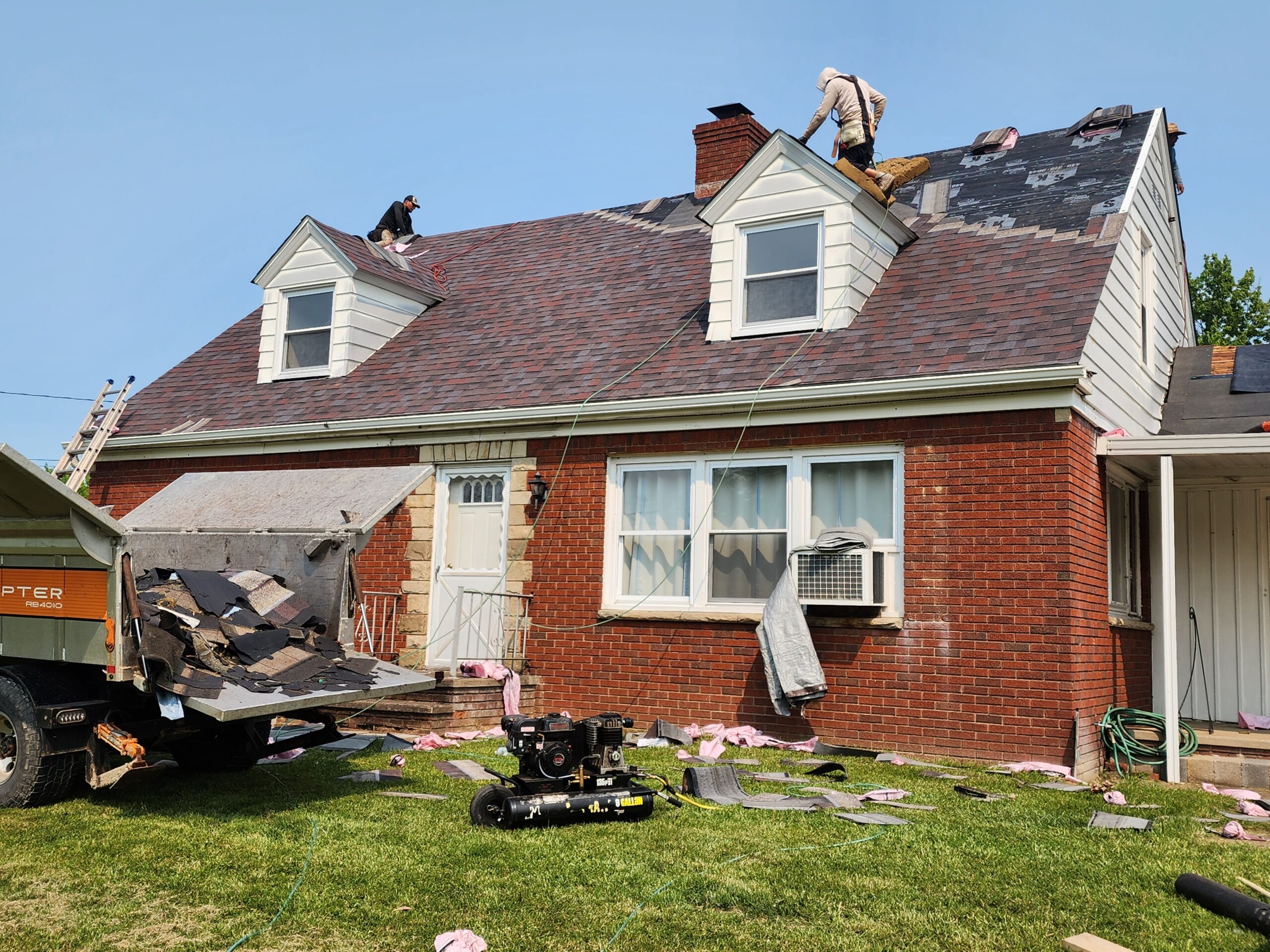Why Can’t I Find a Color Match for My 3-Tab Asphalt Shingle Repair?
If you’ve ever had to repair a roof covered with 3-tab asphalt shingles, you may have encountered a frustrating problem—finding a color match for the new shingles. Whether your roof has been damaged by a storm, a fallen tree, or simple wear and tear, one of the most common challenges homeowners face when dealing with a roof repair is ensuring that the new shingles blend seamlessly with the old ones.
In this blog post, we will explore why color matching can be such a difficult task for 3-tab asphalt shingle repairs and provide insight into the factors that contribute to this issue. We’ll also discuss potential solutions and tips on how to approach a roof repair to achieve the best possible outcome.
1. Understanding 3-Tab Asphalt Shingles
Before diving into the reasons behind the color mismatch, it’s essential to understand what 3-tab asphalt shingles are and why they might present a challenge in the first place.
3-tab asphalt shingles are one of the most common types of roofing materials used in residential homes. They are made from a fiberglass or organic base mat coated with asphalt and granules. The “three-tab” design refers to the shingle’s pattern, where three distinct “tabs” are cut into each shingle, giving the appearance of three individual shingles per row.
These shingles are popular for their affordability, ease of installation, and reliable protection against the elements. However, because of their widespread use, many homeowners are now facing the dilemma of replacing or repairing a roof that was originally installed with 3-tab shingles.
2. The Problem with Finding an Exact Color Match
When your 3-tab asphalt shingles are damaged, it’s natural to want the repair to blend in perfectly with the rest of your roof. Unfortunately, finding a precise color match for your old shingles can be quite challenging. Here are the primary reasons why color matching is so difficult:
a. Shingle Aging and Fading
One of the most significant factors contributing to color mismatch is the natural aging and fading of asphalt shingles. Over time, shingles are exposed to the sun, rain, wind, and other environmental elements, which causes the color to gradually fade.
As the shingles age, the granules that give them their color begin to wear away or become discolored. This means that a shingle that was originally a deep shade of brown or gray may become lighter and more faded over the years. If your roof is more than 10 to 15 years old, it’s almost inevitable that the shingles have experienced some degree of fading.
Even if you find a replacement shingle that is labeled as the same color, it is unlikely to match the faded color of your existing shingles. The new shingles will be more vibrant and have a richer color than your old ones, creating a noticeable contrast.
b. Shingle Manufacturer Variability
Another challenge with color matching is the variability between different shingle manufacturers. Even if you purchase shingles from the same brand and color family, there can still be slight differences in hue and texture due to variations in the manufacturing process. This is particularly true if the shingles were produced in different batches or years.
If your roof was installed with shingles from one manufacturer and you’re now trying to replace them with shingles from another, it’s even more difficult to find a perfect match. Manufacturers use different formulations, granule types, and processes to produce their shingles, resulting in subtle differences in the final product’s appearance.
c. Changes in Shingle Formulation
Shingle manufacturers may change their formulas or materials over time to improve performance, meet environmental standards, or reduce production costs. For instance, a specific color of shingle that was once available might no longer be produced due to changes in the supply chain or manufacturing processes. This can make it nearly impossible to find an exact match for older shingles, especially if the shingles were purchased years ago.
If you’re dealing with an older shingle style or color, you may find that the manufacturer no longer makes the same shade, and the new replacement shingles may not look the same. Even if the new shingles are from the same brand, they might have a different formulation, leading to a noticeable difference in color.
3. What Can You Do to Resolve the Color Mismatch Issue?
While it can be frustrating to deal with color mismatch, there are several ways to resolve or mitigate the issue. Below are some strategies that can help you achieve the best possible outcome for your 3-tab asphalt shingle repair.
a. Replacing Entire Sections of the Roof
If the color mismatch is significant and the affected area is large, one solution might be to replace entire sections of the roof. This will allow you to install new shingles across a broader area, making it easier to achieve a uniform appearance.
For example, if a portion of your roof has experienced extensive damage and requires repairs, it might make sense to replace that section with new shingles. This will ensure that the new shingles blend in with the rest of the roof, reducing the appearance of the mismatch.
b. Choose a Shingle with a Similar Color Tone
In many cases, it may not be possible to find an exact match for your old shingles. However, you can try to find a new shingle with a similar color tone that will blend better with the existing shingles. Some manufacturers offer a wide range of colors and blends, allowing you to find a shade that is as close as possible to your original roof.
When selecting a new shingle, try to choose one with a similar blend of colors. For example, if your roof is made of brown shingles with a mix of dark and light shades, look for a shingle with a similar variation in color. Even if it’s not an exact match, a similar color blend will reduce the contrast between the new and old shingles.
c. Opt for a Multi-Color or Blended Shingle
Some shingle manufacturers offer multi-colored or blended shingles that are designed to provide a more consistent appearance over time. These shingles combine several different shades of granules to create a uniform look that can help mask any differences between the new and old shingles.
By choosing a multi-color or blended shingle, you can minimize the impact of any fading or aging on your roof. These types of shingles tend to blend better with older roofs, as they have multiple tones that mimic the natural aging process of asphalt shingles.
d. Consider a Full Roof Replacement
If your roof is experiencing significant damage or wear, it might be worth considering a full roof replacement instead of trying to patch it up with repairs. A full replacement will give you the opportunity to start fresh with new shingles, eliminating the problem of color matching altogether.
While a full roof replacement is more expensive than simply replacing a few shingles, it can be a good long-term investment. It will ensure that your roof looks uniform, and you’ll avoid the hassle of dealing with mismatched shingles.
e. Patch with the Old Shingles
If you’re dealing with a relatively small repair area and the color mismatch isn’t a major concern, you could consider patching the roof with old shingles. If you have some extra shingles from the original installation, or if you can salvage some that are still in good condition, you may be able to reuse them to patch the damaged area.
While this option may not provide a perfect match, it can be a good short-term solution for minor repairs, especially if you’re not overly concerned with the visual appearance of the repair.
4. How Can You Prevent Color Mismatch in the Future?
Preventing color mismatch during future repairs can be challenging, but there are some steps you can take to reduce the likelihood of facing this issue again:
a. Keep Extra Shingles
If your roof was recently installed or repaired, and you have extra shingles left over from the project, consider storing them for future repairs. Having extra shingles on hand ensures that you can match the existing roof as closely as possible when a repair is needed.
If you can’t keep extras from the original installation, check with your contractor or supplier to see if they have any leftover shingles that match your roof.
b. Regular Roof Maintenance
Regular roof maintenance is another way to ensure that your roof remains in good condition for longer. By addressing small issues like loose shingles or minor damage early on, you can prevent larger problems from developing, which may require a more extensive repair.
Regular inspections and maintenance also reduce the need for significant repairs, which can make color matching easier in the future.
c. Opt for More Durable Roofing Materials
If you’re considering a roof replacement in the future, you might want to explore more durable roofing materials, such as architectural shingles, metal roofing, or slate. These materials are designed to last longer, resist fading, and offer a more uniform appearance over time, reducing the likelihood of color mismatch.
Conclusion
Finding a color match for a 3-tab asphalt shingle repair can be a challenging task, but understanding the reasons behind the mismatch and knowing your options can make the process easier. Whether you’re patching up a small area or considering a full roof replacement, there are several strategies you can use to achieve a roof that looks great and functions well.
If you’re facing a color mismatch issue, remember that you’re not alone—many homeowners encounter the same challenge. By working with a professional roofing contractor, choosing the right shingles, and considering long-term solutions, you can address the issue of color mismatch and ensure your roof remains both functional and aesthetically pleasing for years to come.
 (440) 307-2060
(440) 307-2060
